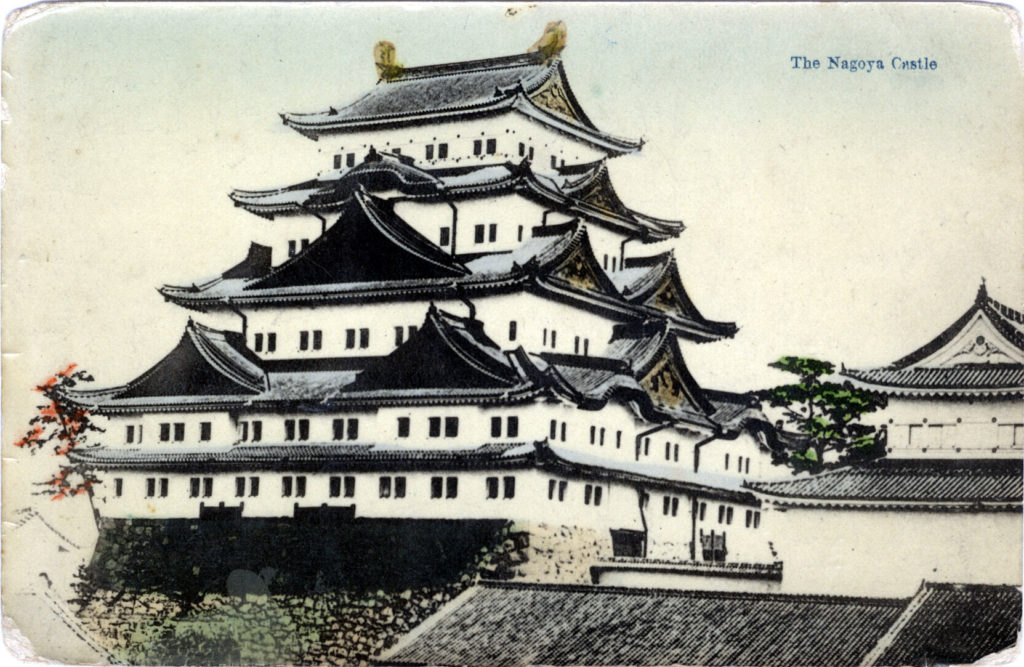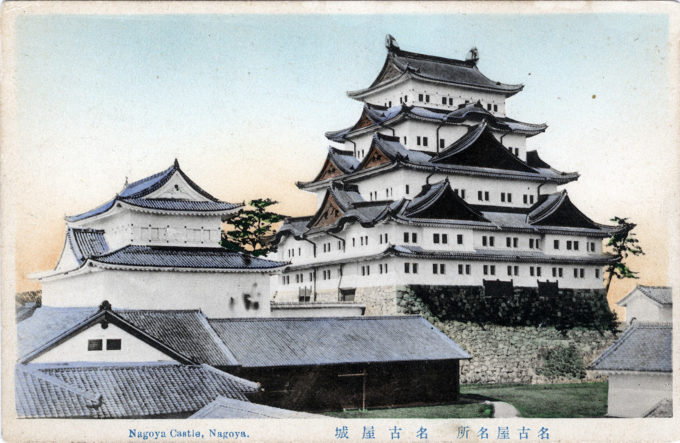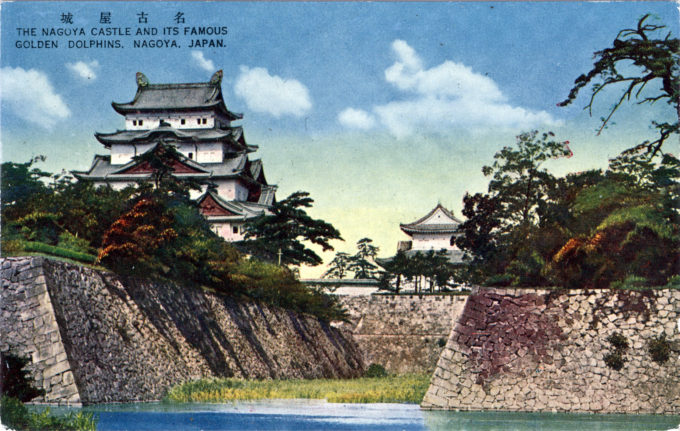“The place came into history early in the 14th cent., when a family of the name of Nagoya resided there. Shiba Yoshimune, governor of the province, built the first castle about 1525, but the martial Oda Nobunaga wrested it from him in 1532. After this was razed and the present castle built on the site, the place became the seat of the great daimyos of the House of Owari, the family of which ranked as one of the Three August Families (Go san-ke) permitted to supply a successor to their kinsman the shogun in default of an heir.
“The ‘Castle (Tenshu Kaku, or O Shiro), a cyclopean, 5-storied, fortified structure in the N. quarter of the city, within a series of (dry) moats and in beautiful grounds, now smaller than of yore, was begun in 1611 and completed 2 yrs. later under the superintendence of Koto Kiyomasa.
“Ostensibly a voluntary gift from a score or more feudal barons to their Lord Yoshinao, it was in reality constructed almost entirely by forced labor … The crafty leyasu’s manifest aim was so to impoverish the great daimyos that they would be unable to wage a successful war against him, and in this he practically succeeded.
“A special permit, easily obtainable through one’s Minister or Ambassador at Tokyo, is necessary to gain admittance to the castle. Without it it is useless to try to get in, for fees are not accepted and a gate-keeper (officer in the army) must be passed before the castellan is reached … Shoes do not have to be removed; smoking is rigorously prohibited, as is photographing, sketching, or the making of notes.
“… Medieval in construction, the fortress is equally so in comfort. A gloomier habitation could scarcely be imagined. War, defense, and extreme solidity were the ideas in the minds of its builders, and while it was never subjected to a sustained assault, the formidable Gifu earthquake of Oct., 1891 succeeded only in opening an insignificant crack in its massive sides.
“The superimposed, copper-bronze roofs, and their many gables covered with the green patina of age are strikingly hand some and graceful. A line of gilded Tokugawa crests adorns the upper ridge, at each end of which, twinkling in the sunlight, stand the famous gold dolphins (kin no shachi-hoko), their tails in the air, and protected by steel wire nets. A good field-glass will aid the traveler to a better view of them.”
– Terry’s Japanese Empire, T. Phillip Terry, 1914
Nagoya Castle, Nagoya, c. 1910.
1910s • Architecture
Tagged with: Castles, Nagoya, Nagoya Castle, Tokugawa era, Tokugawa shogun
Please support this site. Consider clicking an ad from time to time. Thank you!




